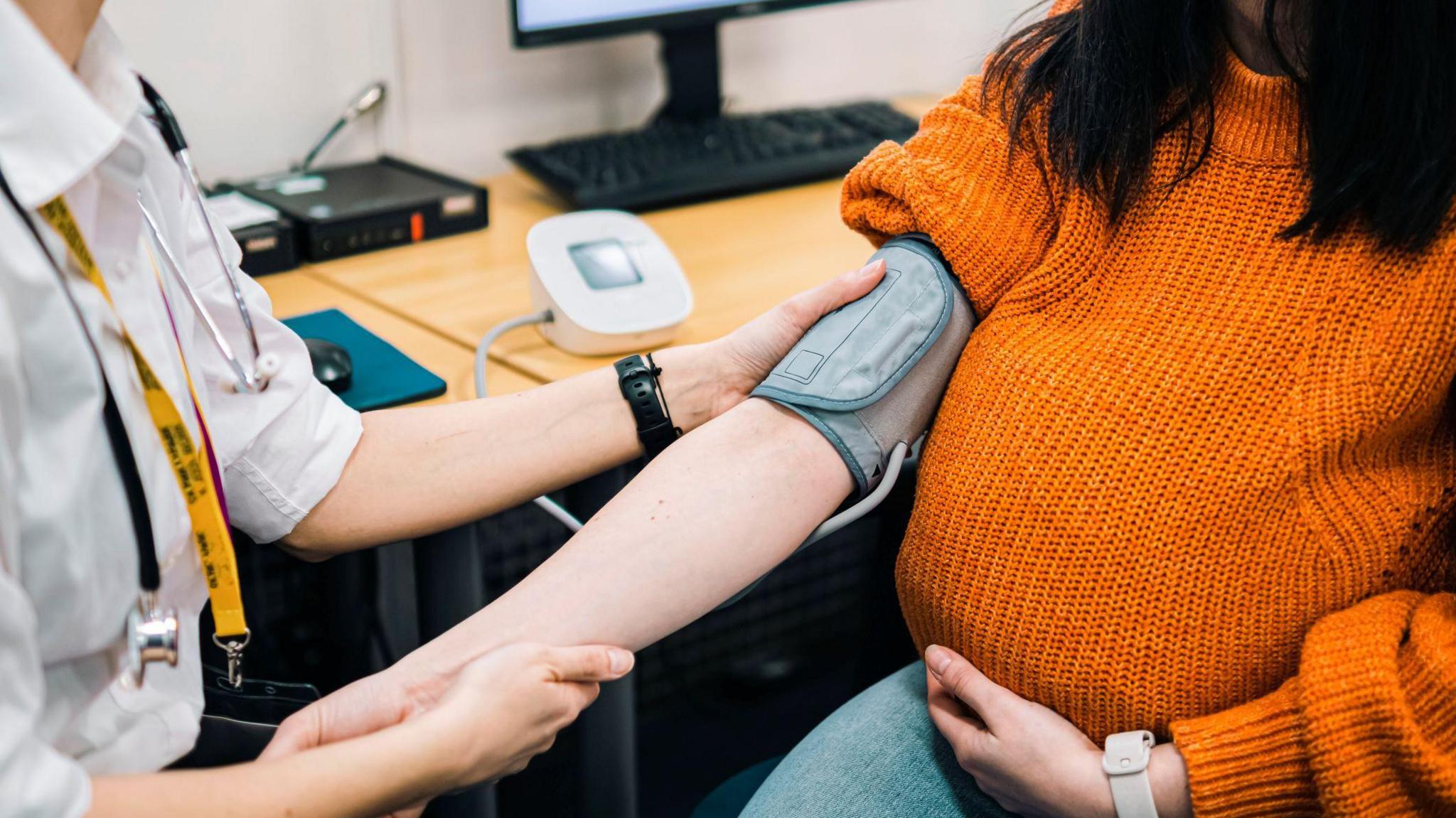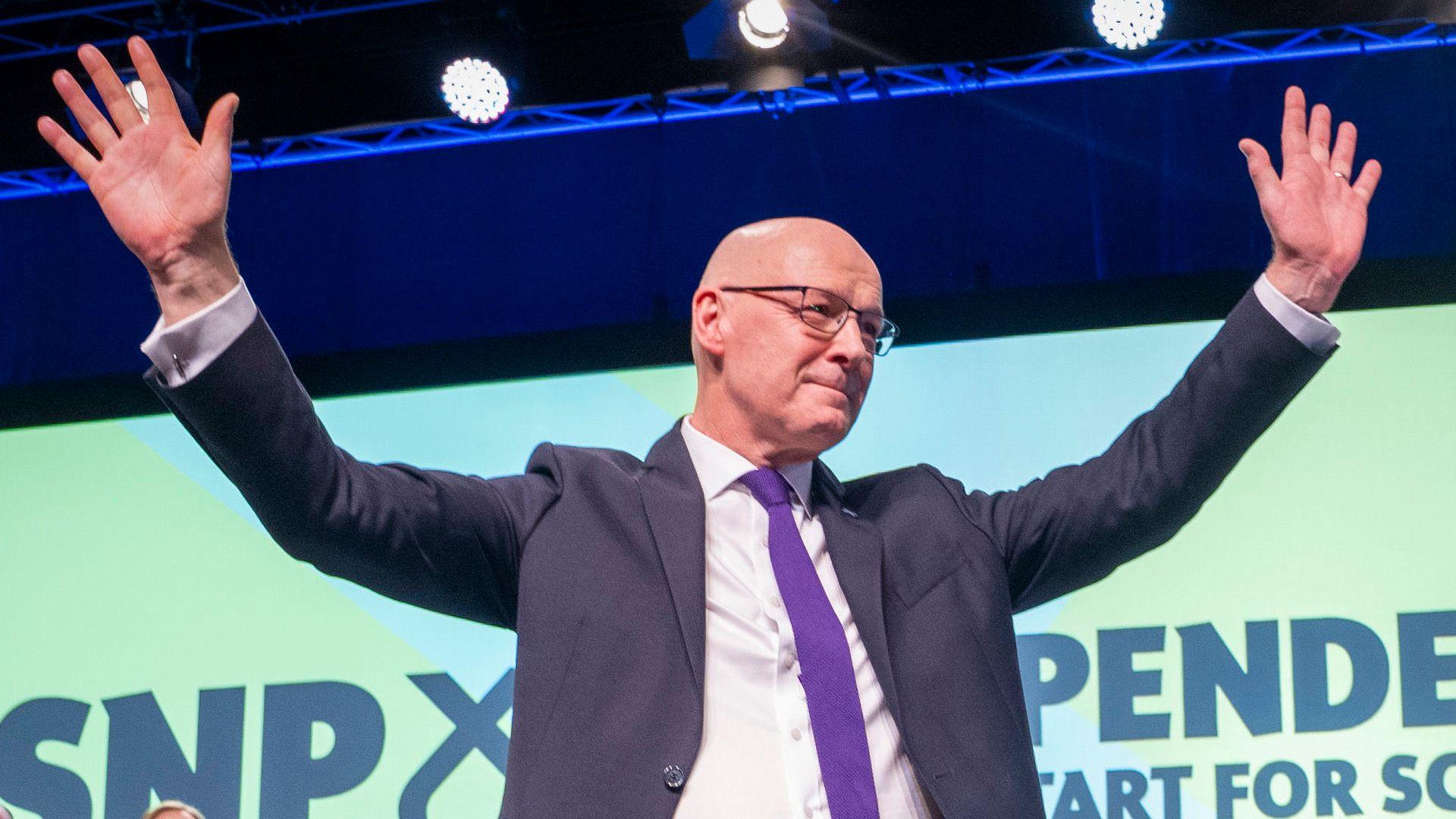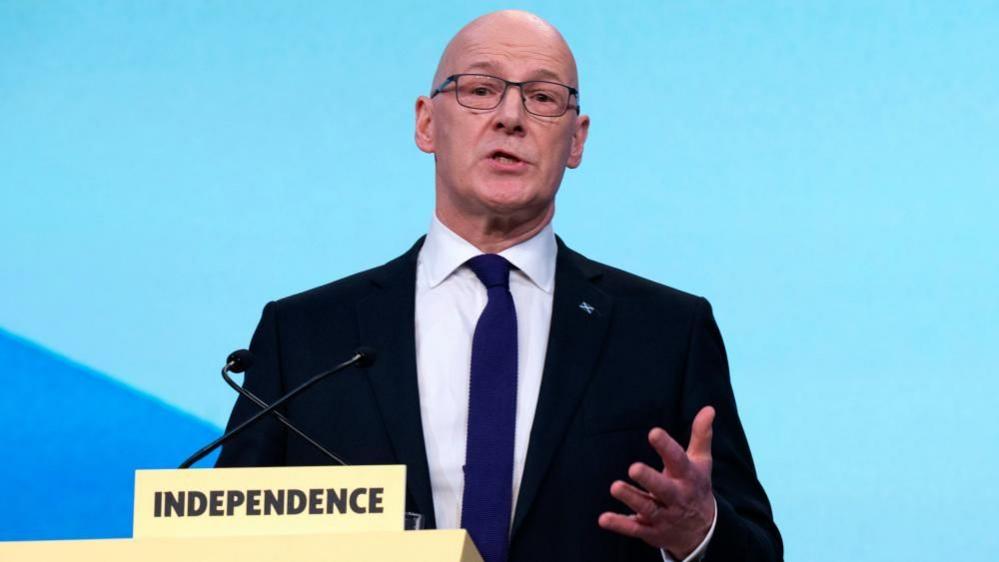GPs question SNP plans for new drop-in services

John Swinney has promised to open 15 new walk-in services across Scotland
- Published
Leading doctors have questioned how the Scottish government plans to staff 15 new drop-in services run by GPs and nurses.
First Minister John Swinney announced plans to roll out the first site "within the year" during his keynote speech at the SNP conference in Aberdeen.
But the vice chair of the Royal College of General Practitioners (RCGP) in Scotland told the BBC he was "not immediately clear" on where the workforce would come from, particularly as Scotland's GP workforce is smaller than it was a decade ago.
Dr Chris Williams also said that Swinney's promise to provide one million more appointments in a year was "not that large" compared to the current level of general practice activity.
Meanwhile the chair of the RCGP in Scotland, Dr Chris Provan, also told the BBC that the body had not been consulted on the plans.
What do we know about GP walk-in services?
John Swinney says the SNP government will open a nationwide network of walk-in GP services
Swinney's announcement on Monday was light on detail, but he was clear that the plan was designed to tackle the "8am rush" for appointments.
The SNP leader said the services would be staffed by GPs and nurses.
They would also operate from noon until 20:00 seven days a week, with no appointment required.
This means, Swinney said, more people could go after work "when it fits with their lives".
Initially there will be 15 of these walk-in centres launched across Scotland, with the first minister promising to expand the number.
The locations, however, have not yet been confirmed.
Swinney said they would be based in communities, "on your local high street, near your child's school, or close to your workplace".
He also said the first site would be up and running within the year.
How many GPs does Scotland have?
The number of GPs by headcount in Scotland has actually increased in the last 10 years - from 4,393 in 2015 to 4,582 in 2025 - but this does not take into account whether they work full-time or part-time.
Another way to measure the workforce is by looking at whole time equivalents (WTEs) - a unit that measures the number of full-time positions.
Scotland's WTE figure has decreased between 2015 and 2025, from 3,675.1 to 3,591.5.
The number of GP practices in Scotland has also fallen by 10% over the past decade, from 987 in July 2015 to 885 in July 2025.
Dr Williams said the Scottish government's plan to introduce drop-in services may be "central belt based" and designed to "take advantage of a perceived workforce that is under-employed".
At the moment, a range of healthcare professionals - GPs, nurses and more - provide 720,000 appointments a week in Scotland.
A key part of Swinney's pledge was that the new walk-in services would offer one million more appointments per year.
But Dr Williams said this was not a large number.
He added: "Without knowing the specifics it's difficult to know how this [plan] could reach anything like the current activity that we have in general practice."
Asked who was going to staff the walk-in services, Scotland's health secretary Neil Gray said that there were a "record" 1,200 GPs currently in training.
He said: "I've been told by general practitioners that we have GPs that are looking for employment.
"We believe that this is something that we can work with the profession on ensuring we can staff both with GPs and on advanced nurse practitioners and practice nurses, and ensuring we've got a model that suits the needs of the people that are coming to see them."
Gray was also asked whether it was a mistake that the Scottish government did not consult the RCGP.
He said: "We are looking to make sure that we're able to work with them ahead of this being piloted and ensure that we're providing a system that is workable."
Though Dr Williams said he was keen to understand how the walk-in service plans would work, he said the best way to give patients timely access to quality care was by giving more funding and resources to general practice.
He said drop-ins would suit "a small number of people with some specific medical issues".
But he added that the "vast majority" of people would get the best experience from their GP if they were able to book an appointment with someone who knows them.
Are drop-ins available elsewhere in the UK?
Walk-in services were first introduced by Tony Blair's Labour government in the early 2000s as one of his flagship NHS policies.
They have been more widely available in England for around 15 years, though many closed after the Conservatives came into power in 2010.
They are currently commissioned on a local level, run by individual boards and their opening hours vary.
In 2007, a paper in the British Medical Journal, external, based on a study by the University of Bristol, claimed walk-in services did not have a "meaningful impact on the demand for general practice".
It warned the services may lead to extra consultations and said they may not necessarily lead to changes in waiting times.
The article also said the overall effect on the NHS would be "negligible" because of the volume of people attending the services.
Dr Williams said that drop in clinics in England "weren't greatly efficient" and did not provide the impact that had been hoped for.
Meanwhile the Scottish Conservatives' health spokesperson Dr Sandesh Gulhane described Swinney's plan as a "back-of-a-fag-packet" policy that he will be unable to deliver.
He said: "The SNP are completely detached from the reality facing staff and patients across Scotland's NHS and have no real vision to fix the permanent crisis within the health service."
Scottish Labour deputy leader Jackie Baillie also criticised the walk-in appointments pledge and said it was as though the first minister had "only just discovered" the NHS crisis.
She added: "After 18 years in power, if John Swinney and the SNP had the ideas to fix Scotland's NHS, they would have done it by now."
- Published13 October

- Published13 October
